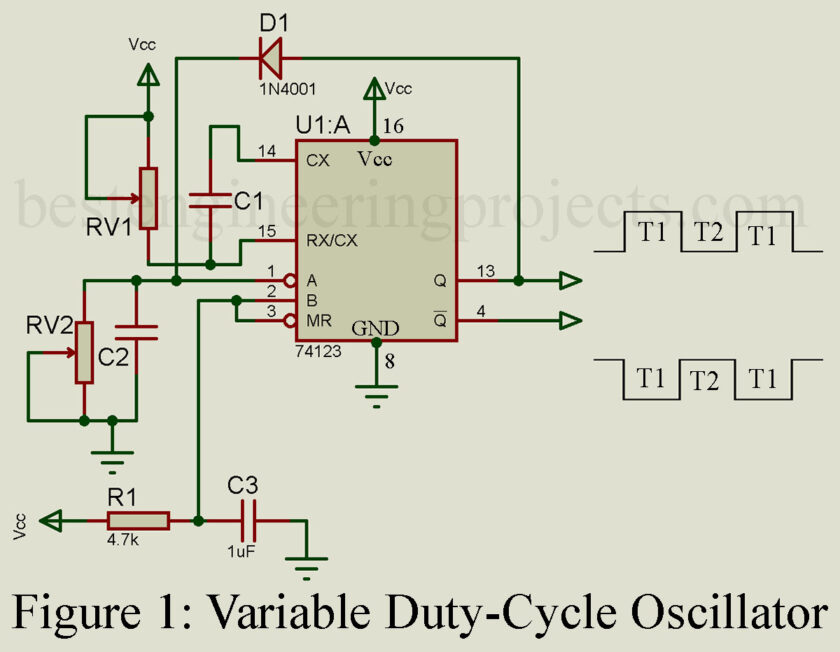IC 74123 is a digital IC called a dual re-triggerable monostable multivibrator or a one-shot. It has two identical circuits that can be used for things like generating pulses or delaying signals. You can use the IC 74123 by connecting it to other parts like resistors and capacitors and then using one of the trigger inputs. This will start a timing cycle that lasts for a certain amount of time, depending on the values of the other parts.
One of the great things about the IC 74123 is that it can work with different voltages and can handle up to 10 TTL loads. This means that it can be used in different situations, and with different types of electronic circuits.
Applications of IC 74123
Some of the applications of IC 74123 include making electronic music, controlling motors and lights, and measuring time intervals, adjustable the duty-cycle oscillator. It’s a versatile device that can be used in many different ways, and it’s easy to use with standard TTL logic families. Overall, the IC 74123 is a useful and reliable device for different digital and analog applications. Here in this tutorial, we will see one application of 74123 IC.
Variable Duty Cycle Oscillator using 74123 IC
The self-starting generator shown here uses a single monostable multivibrator (½ SN74123). The circuit functions as an adjustable duty-cycle oscillator.
After ‘switch on’, input B changes its state from ‘0’ to ‘1’ and triggers the monostable. This results in a high output pulse of duration.
This will be output at Q. The capacitor C2 then charges to Vcc through diode D1. At the end of period T1, the output returns to the low state, which in turn reverse biases the diode D1, and the capacitor C2 discharges through VR2. When the voltage across C2 reaches the threshold, a negative transition from ‘1’ to ‘0’ occurs at input A, which in turn triggers the monostable to produce a high output pulse of duration T2.
This cycle is repeated and results in a square wave whose frequency is given by
T2 is determined by the values of VR2 and C2. The duty cycle and the frequency of the output square wave can be controlled by varying VR1 or VR2. or both.
